Measuring the ROI of SEO is more than just proving yourself to management. It provides a window into what’s working and, more importantly, what’s not working. Sometimes knowing what you’re not good at is more valuable than knowing what you are good at. The same is true for measuring SEO ROI. More often, business owners are turning to SEO to bridge the gap between increasing paid competition.
Paid is a much easier concept to forecast and report on as there is a direct correlation between input and output, at least more than SEO. SEO is a hard concept to validate efforts and even harder to forecast. We break down everything you need to consider when making this calculation all the way down to setting up custom events in your GA4 account.
Buckle up and get ready for some math as we embark on the journey of measuring your SEO success.
Want to get more predictable SEO results?
What is the ROI of SEO?
The ROI of SEO measures how SEO efforts have influenced revenue for your business compared to the cost of those activities. This is an essential part of all marketing efforts, but it’s particularly important for SEO as these efforts commonly drive more than just revenue.
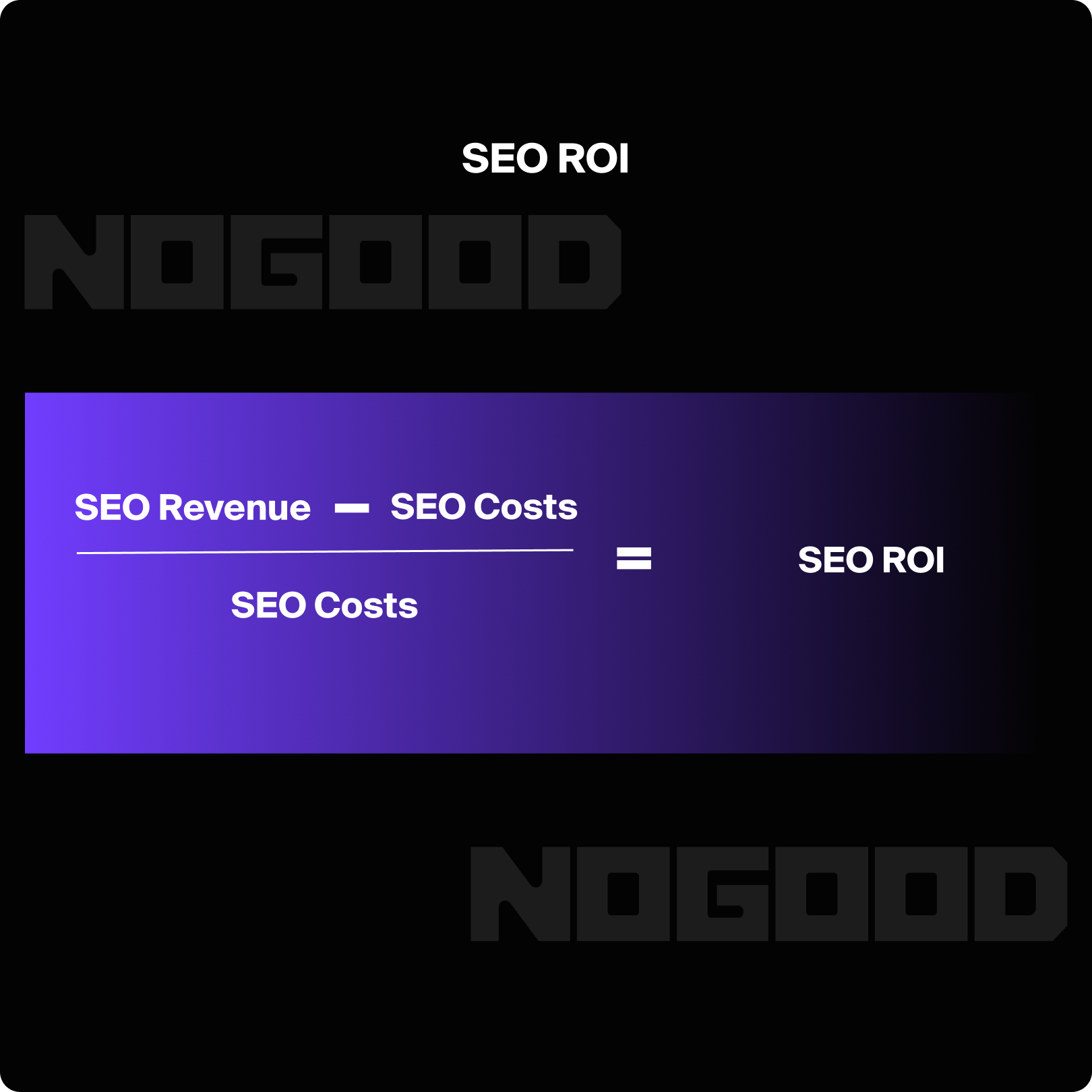
The SEO ROI formula subtracts total SEO costs from SEO-generated revenue and divides them by the total cost of those efforts. Depending on the industry you operate in, competition can be more fierce, driving down your ROI.
Just because you might not bring the actual dollars through the door, pursuing a well-executed SEO plan is still a good investment. Building a stream of organic traffic is just as important as converting traffic. Your organic traffic profile can help propel your business by establishing authority in your industry and allow you to target and even replace paid placements with your own organic listings.
If you look at the screenshot below from Ahrefs, you’ll see that every page on the web will get an assigned traffic value based on current keywords and their corresponding rank.

The value is representative of how much paid dollars it would take to replace the amount of organic traffic. For example, the ChatGPT page on openai.com would take an estimated $11.4 million dollars to replace that organic traffic with paid traffic, that HUGE!
The Importance of Measuring ROI of SEO
While organic traffic is commonly a top traffic source for websites, building up a stream of high converting organic visitors is like printing money. High-intent organic traffic are leads you don’t need to ‘pay’ for (other than the investment in tools and personnel).
With paid placements getting more competitive, more and more businesses are turning to organic channels attempting to generate a more consistent stream of conversions without having to shell out money to ad platforms.
Businesses that attempt to make the switch need to understand where those efforts are going since measuring organic growth and revenue can be challenging, stressing the importance of measuring the ROI of your SEO efforts.
It’s not all about money, well, maybe it is, but there are other reasons for measuring SEO ROI, here’s a few:
1. Justifying SEO Budget and Resources
Understanding the financial impact of SEO efforts helps to secure buy-in from management teams and ongoing budget for tools and team resources. Having a clear understanding of which activities are yielding the highest ROI allows you to better allocate resources.
2. Optimizing SEO Strategy
On the thread of understanding what activities yield the best results, this enables you to have a clear understanding of where you might want to scale back efforts on less-impactful initiatives. Focusing on high-performing areas allows you to optimize your strategies so you can get the most bang for your buck.
3. Aligning SEO with Business Goals
Demonstrating how SEO contributes to overall business goals will strengthen the position of these efforts within your organization. Showing that your efforts and department play an integral role in revenue growth is never a bad idea, especially when paid efforts are on the decline.
4. Competitive Advantage
Benchmarking success against competitors will help you get a view into where you’re able to cause change and take away market share from competition. This will only help you increase your overall organic visibility and expand your customer base, contributing to more conversion-focused users on your site.
3 Steps to Measure SEO ROI
Measuring SEO ROI begins with getting a full understanding of what you’re baseline costs are combined with variable costs of content distribution, analysis, and team resources. We break down how to get a full view of your investment in the following categories:
1. Calculate Your Up-Front SEO Investment
Your up-front or baseline investment includes everything you need to provide an SEO service. This can vary depending on whether you’re doing SEO from the viewpoint of an agency vs in-house, but the up-front costs will look similar. To get a clear picture of your initial investment, consider the cost of the following SEO aspects:
- In-House & Contractor SEO Resources
- SEO Tools
- Content Distribution Costs
- Link Building Costs
2. Track and Analyze Conversions
Once you have an understanding of what it costs just to get things off the ground, you can pivot to understanding the revenue and conversion metrics that follow. Before you jump into this step, you must have a GA4 property with a flow of data you can trust.
If you want to collect e-commerce-focused data, you’ll need to set up ecommerce events in your Google Tag Manager (GTM) account. If you need assistance setting these up, you can follow these steps.
These will be unique to your site; once you have these set up, you’ll have a clear view of all the ecommerce activity on your site. By filtering down to organic traffic, you’ll be able to report on the value of SEO efforts from a revenue perspective.
Tracking conversions will also vary by site since you’ll need to set up specific event tracking within GA4 to analyze key user events. Measuring real dollars is always easier than conversion events, but both can be tracked and reported on using your GA4 instance.
To create a custom event, you’ll go to ADMIN, then EVENTS.
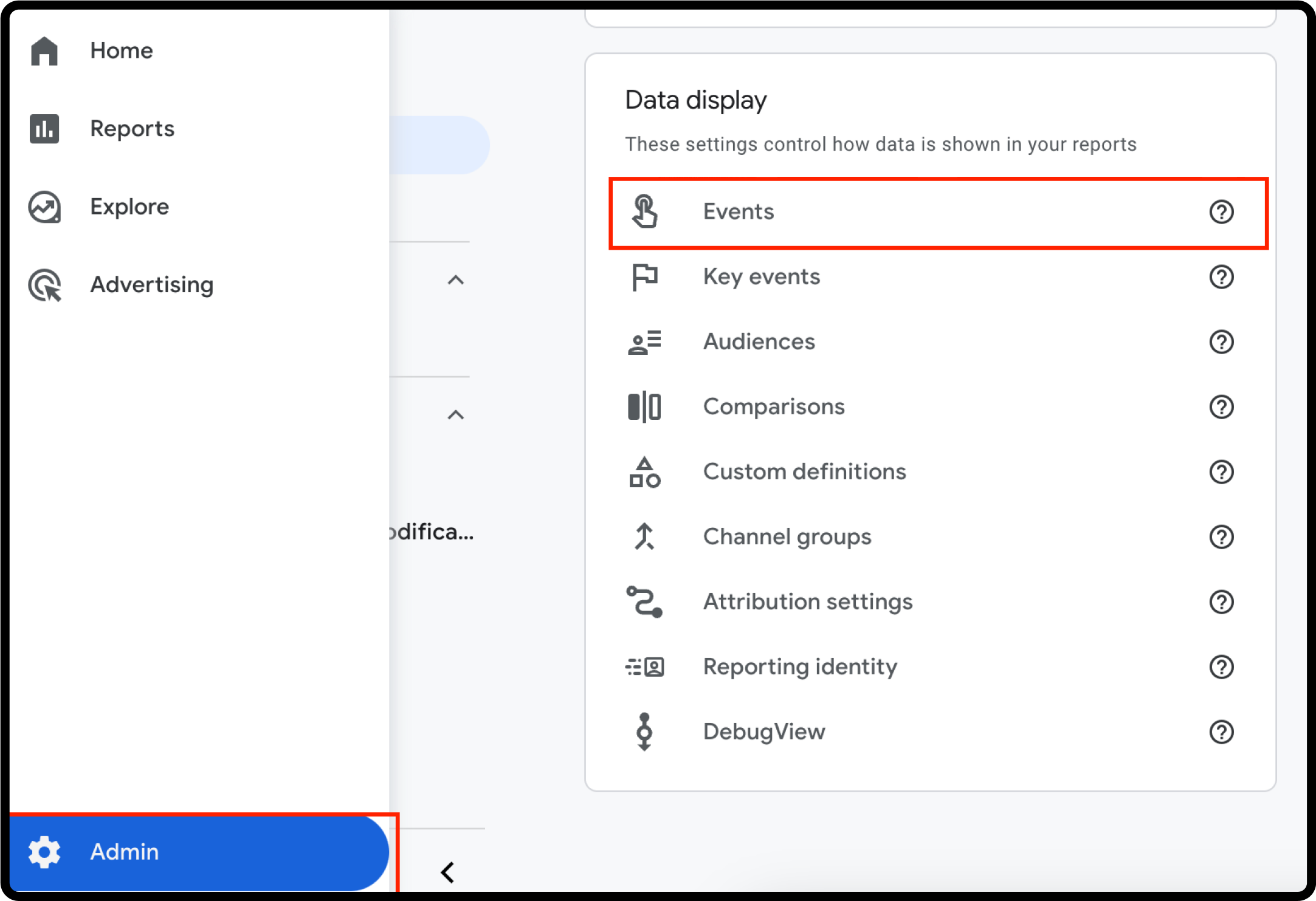
Once you’re in the events section, find the button that says ‘Create Event’

You’ll use this to create events for all the custom actions you want to track. These events can be either directly related to revenue or overall business goals, or leading/lagging indicators. This means tracking events that lead up to your specific goals.
You might want to have a view into more than just a button click or a form fill. Understanding what the user is doing before and after key events can provide important context into their behavior and you can use this in future campaigns to report on website engagement.
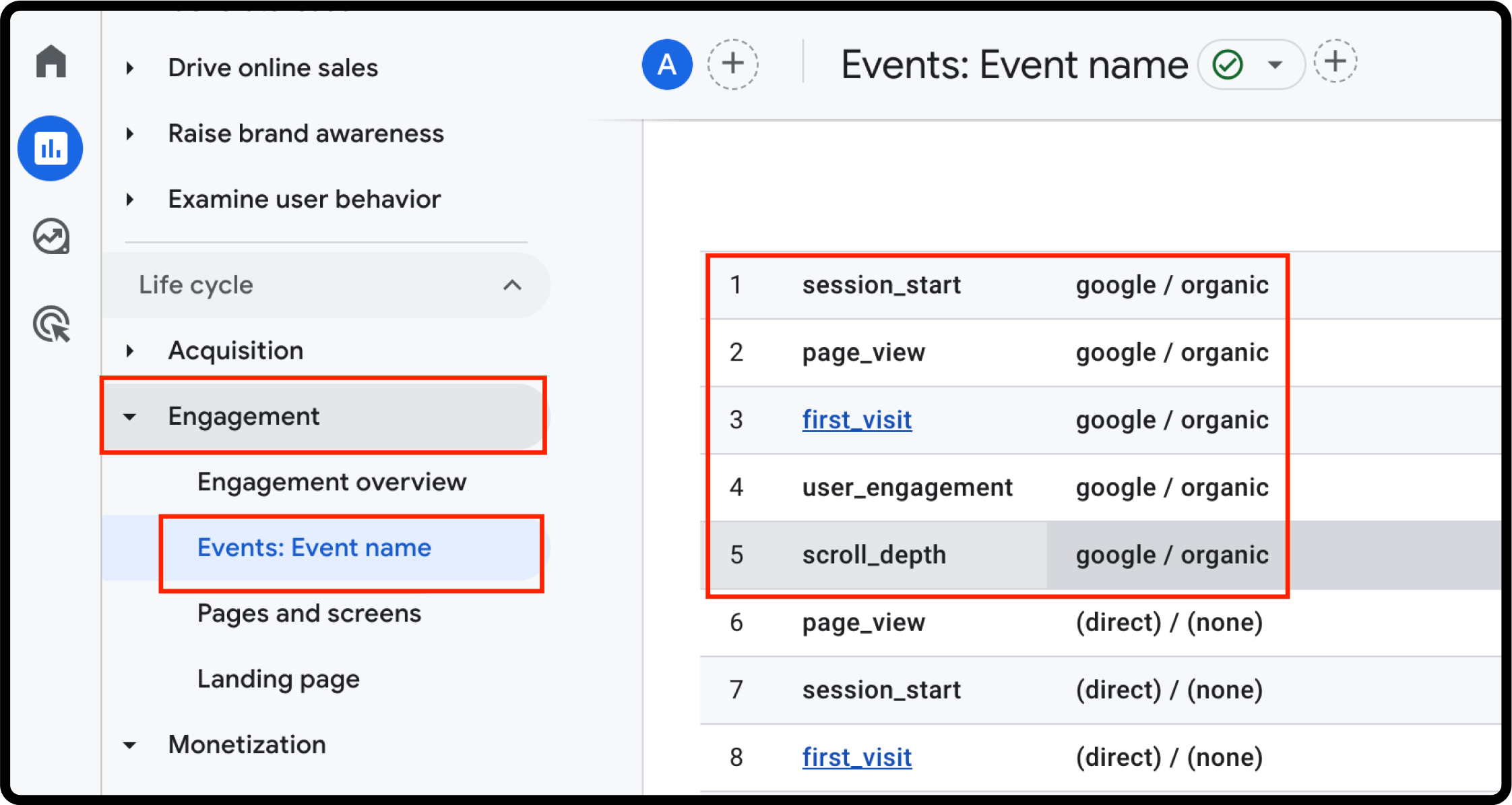
The events will then be logged in your Engagement report. You’ll have a full view of all the things happening on your site and how user behavior changes by page and channel. If you have events that aren’t necessarily tied to direct revenue but still want to attribute a dollar amount to them, you can add your own value by understanding customer LTV.
For example, let’s say you want to assign a “Sign-Up” event to a dollar amount so you can communicate results beyond just purchase. Let’s use the following assumptions:
Assumptions
- Average Customer LTV: $1000
- Conversion Rate from Sign-Up to Purchase: 20%
- Average Order Value: $50
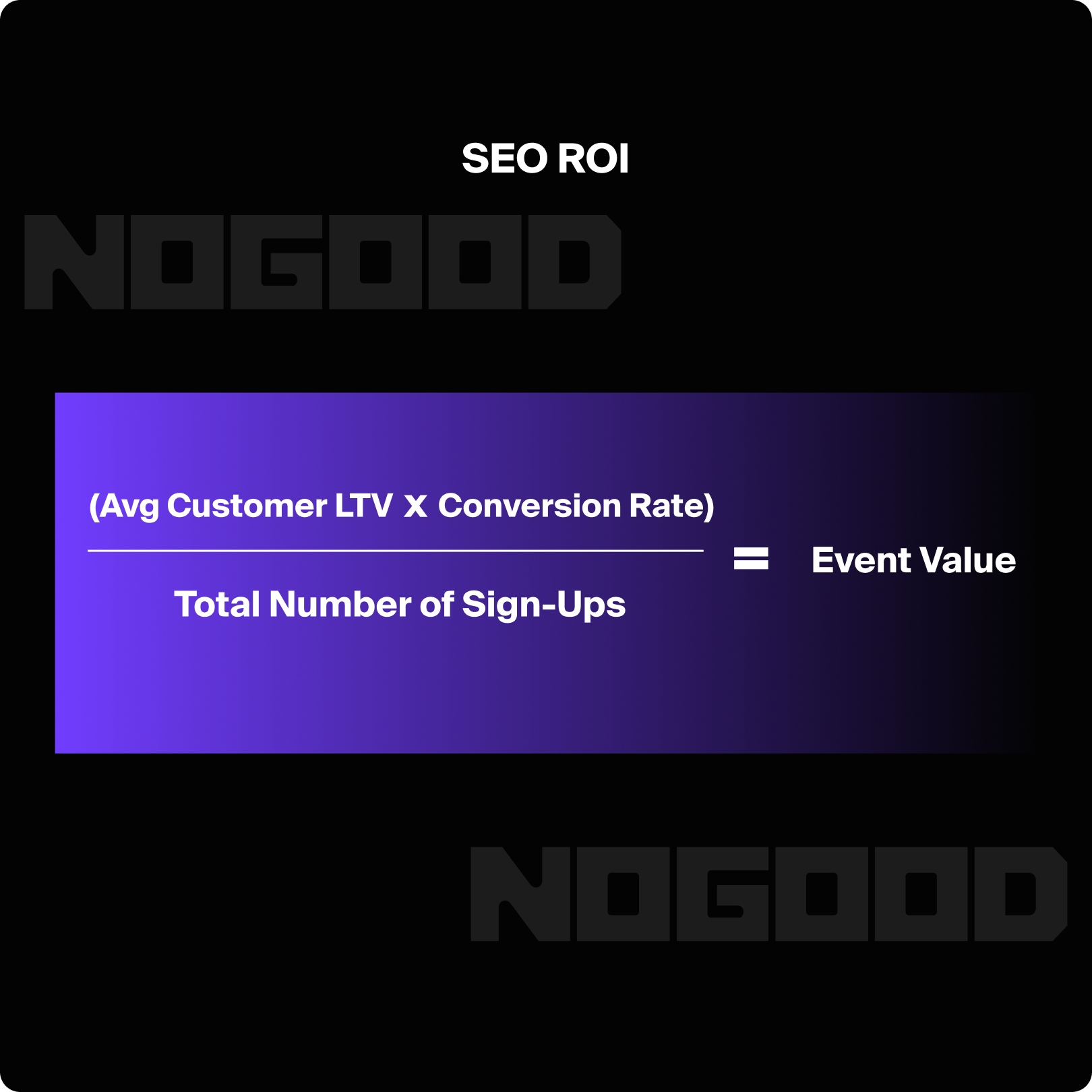
This would mean that the Event Value = ($1000 * 20%) / Total Number of Sign-Ups. Put simply, it would be $200 divided by the number of sign-ups. While this is a basic example, you can see how LTV and conversion rates play a role in determining the value of an event.
3. Calculate Your Return on Investment
Now that you’ve set up events, assigned them all values and understand what baselines costs you have, you can now revisit the formula from the beginning and plug in all the necessary variables.
Let’s assume a hypothetical e-commerce business is generating $50,000 in SEO revenue and has a total baseline cost of $15,000
- SEO ROI = ($50,000 – $15,000) / $15,000
- SEO ROI = $35,000 / $15,000
- SEO ROI = 2.33
The SEO ROI is 2.33, which means for every $1 invested in SEO, the business generated $2.33 in revenue. This represents a strong return on investment for the SEO efforts.
Frequently Asked Questions
1. How Long Does It Take to See ROI from SEO Efforts?
SEO is all about delayed gratification, something we’re not used to in this day and age. If you’re a plant lover like I am, you know that plants take time to sprout, become strong, and grow into something beautiful. SEO is the same; the more time you take to water and give plenty of sunshine, the better off your SEO efforts will be.
To answer your question in the most SEO way possible, it depends.
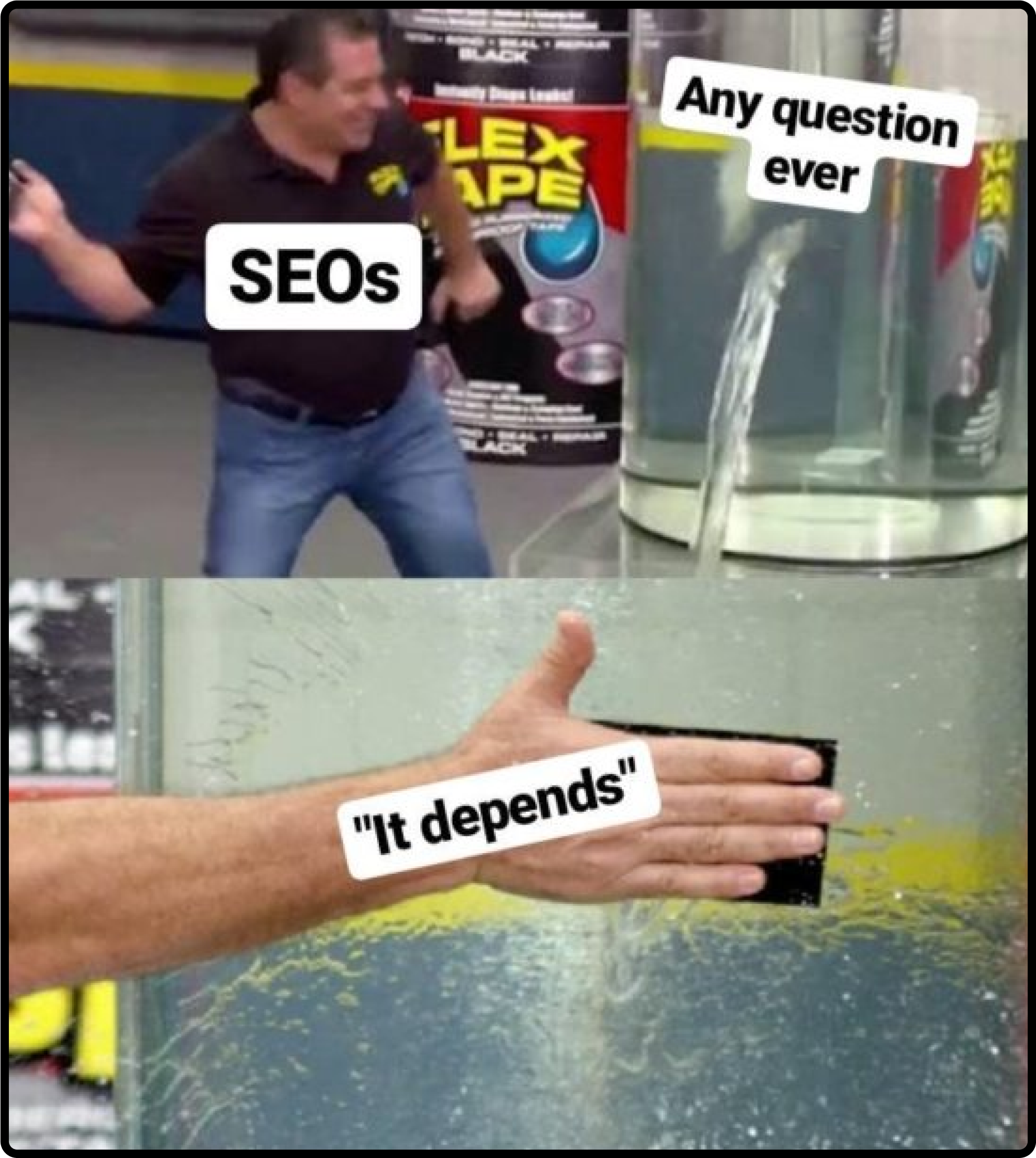
Industry matters, strategy matters, and competition matters. Every industry is unique and has its own challenges when embarking on an SEO initiative. If you’re just starting out and haven’t really given SEO a go before, AND your strategy is on point and well-optimized, you might see initial results in 3-6 months.
You need to build up a network of content that communicates authority in your space so that Google can attach these ideas to your site, influencing your ability and speed to rank. SEO takes time, so make sure to water every day.
2. What Are the Common Challenges When Trying to Predict ROI?
SEO is not a very predictable thing. There are an insane amount of variables that influence your ROI. Let’s say you have a keyword research plan that influences a quarter’s worth of content, but that keyword research plan is junk. That’s basically a non-starter, and even though you’ve done the research, all that effort could be for nothing.
Having the skill and know-how to craft the strategy is a must, but that’s just one variable. What about the execution of that plan? Did the writer do a good job? Is it well-optimized?
Take the human element out of it; you still have to deal with the ever-changing overlord of Google. Google is making changes all the time and has arguably made more drastic changes to their algorithms in the last 2 years than ever before. All of these variables make it incredibly challenging to predict performance. This puts greater emphasis on calculating ROI on your SEO efforts.
3. Should I Put My Efforts into Something More Predictable, Like Paid Ads or Paid Social?
Paid Ads and paid social belong in most marketing plans and this isn’t a call to eliminate them. Predictability is relative, the more time and effort you put into creating clear event values and understanding your costs of doing business, the better and more predictable your results will be. Will SEO ever be as predictable as paid efforts? Maybe, maybe not, but we can certainly get close.
Creating Predictability in an Unpredictable World
SEO ROI is becoming increasingly important as businesses incorporate these efforts into their marketing plans. Understanding where money goes is not a new concept to business owners and the need for clear and accurate reporting is a must for both in-house and agency roles.
If you want to get more predictability and return on investment out of your SEO efforts, working with NoGood could be the answer you’ve been looking for. Our team of SEO experts is well-equipped to create predictable growth plans for increasing your organic visibility. If you want to learn how we can help you achieve success, let’s talk!







